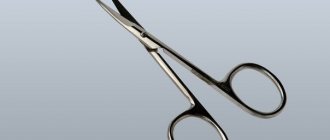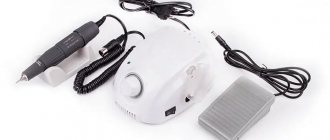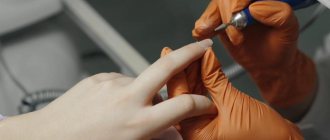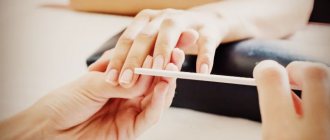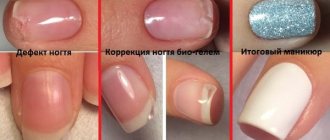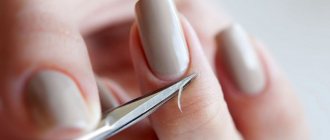There has long been a discussion among manicurists about which type of manicure is preferable - classic or European. The first refers to a nail treatment in which the cuticle is removed mechanically, that is, with scissors or nippers. This type is considered more traumatic, but the manicure looks much neater. With the second type of treatment, the cuticle is simply moved away from the plates; it is believed that the likelihood of injury or wounding in this case is lower. We will talk about how European manicure is performed and, directly, what it is, in this material.
[yandex1] [google1]
What is cuticle and why remove it
A thin film that constantly appears on the nail from under the proximal ridge is called eponychium . Among nail service professionals - pterygium .
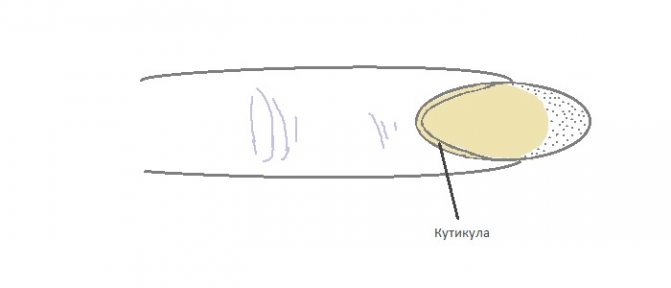
! The cuticle must be removed, otherwise hangnails will form
The cuticle will stretch behind the growing nail, since it is tightly connected to it, causing the ridge to grow to it and thickening the skin in this area. Capillary sprouting will follow for the trophism of living tissue, and the nail will become shorter.
| In children, you can sometimes notice the cuticle extending half the length of the nail. This is dangerous: hangnails can easily become infected, causing suppuration and even panaritium. Therefore, it is important for children not only to cut their nails, but also to push back the cuticles. |
Any manicurist will be happy to tell you how to do this. Better yet, go to an appointment at a salon where they do children's manicures . There is nothing complicated about this, and the mother herself will be able to take care of the baby’s nails.
Cuticula , translated from Latin as “skin,” surrounds the nail plate. This prevents foreign bodies, specks and grains of sand, from penetrating the growth zone of the nail. Damage to the growth zone can lead to disruption of nail formation. This thin skin is removed by itself when moving the hand forward in a loose environment (sawdust, sand, cereals, hay, etc.).
City residents have not made such movements for a long time. When the cuticle is raised up and separated from the nail, it dries out and falls off on its own. That's why it's so important to do a scrub if you give up a manicure.
Cuticle can be removed in two ways:
1. using metal nail scissors or nippers;
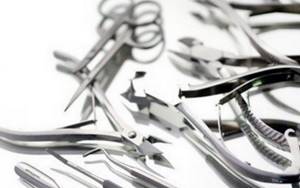
2. using abrasive tools that cut it down (mill, files, pumice).
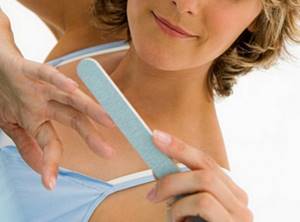
! With the first method, steaming your hands is mandatory.
The more skin has grown, the longer you will need to keep them in water. Hot water softens the skin much faster. In the second method, in order not to damage the top layer of the nail, special keratolytics are additionally used. These are products that loosen the skin and disrupt the bonds between keratin fibers. The treatment itself has two stages: before the remover and after.
Cuticle care after the procedure
Once the cuticle is removed, the treated area needs to be cared for. Care is carried out regardless of how the removal went - whether the healthy dermis was affected or remained untouched. Additional protection is necessary for the cut site, which has a thin layer of cells. To do this, you can use cream, baths and compresses. To slow down the growth of the cuticle, special products are used that will help avoid frequent cutting.
With regular use of the active ingredients, which are rich in minerals and vitamins, the epidermis is restored, cracks are prevented and the skin around the nail is maintained healthy. Useful ingredients are found in removers, caring pencils, scrubs that remove dead cells and slow down the growth of hangnails, masks, compresses and cuticle oils.
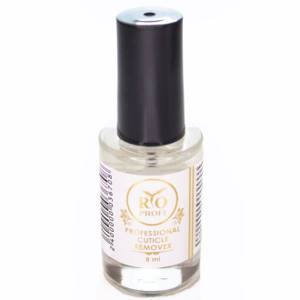
Cuticle removal by trimming
This method is time-tested and has been used for many thousands of years. Scissors were previously used to remove skins steamed in a special bath. Later they began to use tweezers. You can remove cuticles using a trimming method either with someone else’s hands or with your own without leaving home.
| The advantage of tweezers is that they cut obliquely rather than straight. This allows you to capture more skin and the cut looks more accurate. |
To perform the cuticle removal operation, it is important to follow a certain procedure. It is different for trimmed and unedged options. This is dictated by the ability of the skin and nails to absorb water and substances dissolved in it. When immersed in water, the skin absorbs significantly less water than the nails. They have a porous structure and expand under the influence of maceration. It will not be possible to file such nails.
Preparing your hands
You need to remove cuticles regularly. The frequency of procedures depends on the individual biological characteristics of the person. For some, the skin grows back very quickly, while others may not notice its growth for weeks.
As soon as you notice that the cuticle has an unattractive appearance, start removing it. Before doing this, prepare your hands for the procedure.
For those who want to know whether gel nail polish is harmful, it is worth reading the contents of this article.
But whether pregnant women can have gel polish on their nails, information from the article will help you figure it out.
It’s also worth finding out what you need to coat your nails with gel polish. All information is described in detail in this article: https://soinpeau.ru/kosmetika/dekorativnaya/lak/chto-nuzhno-dlya-pokrytiya-nogtej-gel-lakom.html
To do this you need:
- make a five-minute hand bath (you can improve the effectiveness of the bath by adding sea salt, cosmetic or essential oils, and lemon juice);
- wipe your hands dry with a soft towel;
- apply nourishing hand cream;
- Wait a few minutes for the cream to be absorbed and blot off any excess with a napkin.
How to remove cuticles from nails
Video on how to remove cuticles from nails:
Conditions for cutting cuticle removal
To carry out the circumcision procedure, a preliminary bath is required , which will steam the skin and saturate it with water, thereby loosening it. This will make it easier to separate and cut the cuticle than without maceration (steaming your hands in a bath with soap or keratolic added there).
- Tools quickly become dull when cutting unsteamed skin. Manicure blades have such a thin edge that they sharpen it with a diamond disc. A simple fall from the table can ruin the instrument forever by bending its tips to the side. If you use the tool incorrectly, this may cause the blades to stop closing. Just throw away such a tool. Therefore, it must be stored in a special cap to protect the blades.

- Many girls, having received a manicure clutch as a gift, immediately start doing a manicure without knowing the basics of the procedure. It turns out badly, and they lose interest in this method. It's a pity. Simply keeping the tweezers in working order and constantly sharpening them will give you such pleasure!
! When the cut goes like clockwork, leaving behind a new, beautiful path, it gives you a good mood. Areas of nearby nerve receptors are affected. Manicure becomes stress therapy. The unedged method does not give this effect.
- The greatest pleasure is when a manicure is done by a master. It’s not for nothing that in the movie “Legally Blonde,” Reese Witherspoon’s character goes to a nail salon when her life collapses. This is really a good tool.
The advantage of this procedure is that it can treat even the most neglected hands. The result is visible immediately. After the procedure, the cuticle grows slowly. The downside is that the master may accidentally injure the client. Therefore, you should carefully monitor the sterility of instruments.
Practical advice
In order for your hands to be well-groomed for as long as possible, and for the cuticle to remain soft and thin, you need to use some rules in everyday life:
- Regularly use creams and oils with vitamin E. It is worth getting a separate tube, which you put in your purse and always take with you, in order to protect and nourish your hands in case of dryness. Remember that in summer the cream should moisturize the skin, and in winter it should nourish and protect from frost.
- Oil your cuticles daily. This can be either a special cuticle oil or any base oil: castor, jojoba, almond, olive, etc.
- Take baths with herbs, essential oils and salt once a week.
- Clean and wash dishes only with gloves. Chemicals should not come into contact with the skin.
- Do a hand massage. It restores blood supply, which is also well reflected in the condition of the nails.
- Look for a cuticle remover in pharmacies.
- If you go to the beach often, try not to come into contact with sand.
- After swimming in the pool or sea water, rinse your hands.
- Don't run your hands and don't grow cuticles. Get your nails done regularly.
- If you see inflammation on the cuticle, treat with antiseptic ointment and consult a doctor. This way you can avoid infections and the spread of fungus.
Whatever method you ultimately choose to remove cuticles, take care of your hands and maintain their beauty.
How to prevent cuticles from growing - LIFE HACK
Removing cuticles by untrimming or pushing back
This progressive method appeared in the last century and is based on the use of special means. By applying them to the cuticle area, the master achieves a steaming effect ; the skin in the area of the drug’s action loses its bonds and prepares for removal. Having moved the proximal roller, the master will simply clean the dissolved cuticle from the nail with an orange stick . But you don’t have to run to the salon every time to see a nail technician; you can do a great job with your cuticles at home.
! The disadvantage of the procedure is that advanced cases are not subject to such treatment. Plus, there is no possibility of skin injury, which could lead to infection.
This method requires regularity. It is suitable for those who constantly monitor the condition of their hands. People of such professions as bank workers, waiters, and other public people can successfully use this method. For those who do manicures no more than twice a month, we can recommend the trimmed version.
Cuticle removal with unedged tools (hardware manicure)
There are many special files that allow you to remove slightly overgrown cuticles. This is done on dry skin. Recently, a ceramic file has appeared that has a very fine abrasive. When tested on the skin it is not felt.
This was not the case with the previous generation - pumice for European manicure. In addition, the pumice quickly became clogged with skin flakes and required replacement. In this sense, the hardware processing option is more profitable, because it has replaceable nozzles and caps. Such pumice also did not process rollers for long. A professional 180 grit file on a plastic base is well suited for processing rollers. The file movements are made in one direction - both for nails and for rollers. Manicure machines are good at removing dry skin.
- An attachment with a diamond cutter, a “spherical diamond bur,” is suitable for this.
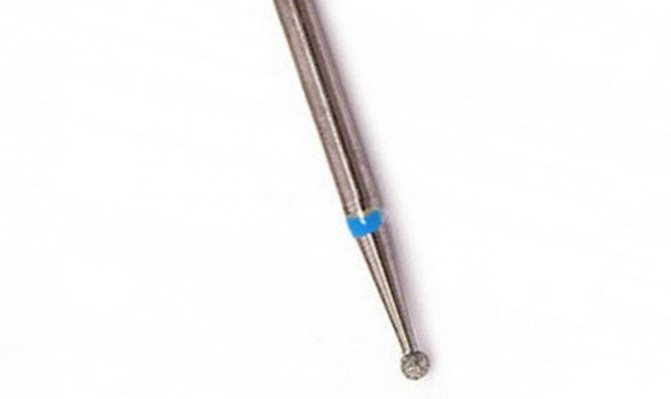
- The speed is no higher than 15-20 thousand revolutions per second.
- You can use a polygonal cutter to remove cuticles.
- Afterwards – a corundum cutter used for grinding.
- The rollers are treated with another nozzle, a needle-shaped one. It has a cross cut and copes well with hardened skin.

- Near the rollers, reverse is turned on so that the direction of rotation is always away from the nail.
Differences between European manicure and hardware and edged manicure

- cuticle _ In the case of a European manicure, the cuticle growth is not cut off, but is only moved to the base of the nail or carefully removed after softening, while the classic one involves cutting, and the hardware one involves grinding off;
- low chance of injury . It is much easier to cause discomfort or even pain with a device or pliers than with an orange stick. Of course, much in this matter depends on the professionalism of the master;
- infections . The European method does not violate the integrity of the skin, and is also performed with a disposable orange stick. With this approach, it is almost impossible to introduce an infection. Despite the desire of masters to comply with SanPiN requirements for sterilization of instruments, in the case of hardware and classic manicure, the chance of infection is higher;
- skills . You can do a European manicure yourself. It practically does not require specialized knowledge, while hardware and trimming are recommended to be performed by craftsmen who have the appropriate skills;
- result . With trimming and hardware techniques, the result is visible immediately, while European manicure requires patience - the cuticle will need time to slow down its growth.
What is hardware manicure, features of its implementation
Trimmed classic manicure - how to do it correctly
Combined manicure - what is it, stages of implementation
Review of products used for unedged manicure
Products used for unedged manicure are divided into three large groups: 1. Alkaline (KOH or NaOH), which must be thoroughly washed off to avoid allergies; 2. Acidic (AHA or BHA), which should not be washed off - they nourish cells and accelerate their synthesis; 3. Based on urea (used mainly in pedicures). The active ingredient of the first group is caustic soda or caustic potassium, used in the production of liquid and solid soap. They themselves are very dangerous, they corrode skin and tissues. They are found in small proportions in manicure preparations. Legislative documents establish a 5% threshold. After application, the alkali corrodes the surface of the skin, destroys its composition and kills living cells. To avoid any troubles, the exposure time stated by the manufacturer ranges from 15 seconds to 1 minute . After this, you should thoroughly rinse the product from the skin. Manufacturers themselves insure themselves against undesirable consequences that their product may cause to consumers. A decrease in the percentage of the active substance leads to a loss of remover properties. The shelf life of such products is limited, and by the end of it the effect after use is no longer the same.
Alkaline removers are usually used for salon procedures, and acidic removers are used for home manicures.

The second group of drugs based on fruit acids has a higher cost and quality. Alpha and Beta hydrophilic acids included in these products penetrate deeply into the skin thanks to their small molecules. They destroy the connections between living cells and dead ones, enhancing their peeling. Living tissues that have absorbed ANA (water-soluble) or BHA (fat-soluble) acids enhance trophism and synthesis. Tissue renewal guarantees even and smooth skin in the cuticle area. There is no need to wash off this product.
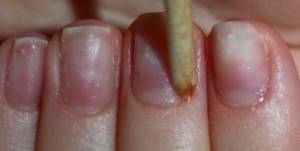
If you nourish the cuticle with these acids between manicure sessions, it will not grow.
The third group does not belong to alkalis or acids . Urea is a product of protein breakdown. It loosens keratin very well, so it is used mainly to combat calluses. This is a strong substance that can completely dissolve a nail in 2 days. It is used in the treatment of fungal infections. ! Preference should be given to brands with acidic compounds.
- This is primarily the anticuticle “Avoplex from OPI” , which contains AHA.
- Pencil remover “SOPHIN, 0531” based on BHA and oils, with constant use, does not allow pterygia to grow.
- Among alkaline products, anticuticles from CND and Be Natural . The latter brand is known for its excellent pedicure compositions.
Using a buff to add shine to your nails
This is not a mandatory stage of an unedged manicure. But if you want to achieve perfection, use a buff or polishing file. Carefully, without undue enthusiasm, we walk over the surface of the nails. This is how we align the plates and give them a natural and healthy shine. Polishing is also used in Japanese manicure, which can restore even damaged nails.
Which removal method is better?
The unedged method is faster, but requires special equipment (manicure machine, special files, keratolytics). It is often used in salons. It is almost impossible for them to injure the client, which cannot be said about trimmed manicure. Accordingly, disease transmission is minimal. But there is one drawback: if the nails are very neglected, then without a trimmed manicure there is no way to get your hands in order. For home manicure, a device with replaceable attachments is well suited. They are standard and can be constantly changed. You will also need remover and oil. If you treat your nails weekly, your nails will look like they came out of a salon visit. This procedure will take about 20 minutes. Anyone who wants to use a trim manicure kit will get a good effect after taking a bath. The more the nails are steamed, the better all the excess will come off. Just don’t forget to file them down before taking a bath. Both methods are worthy, the choice is yours.

